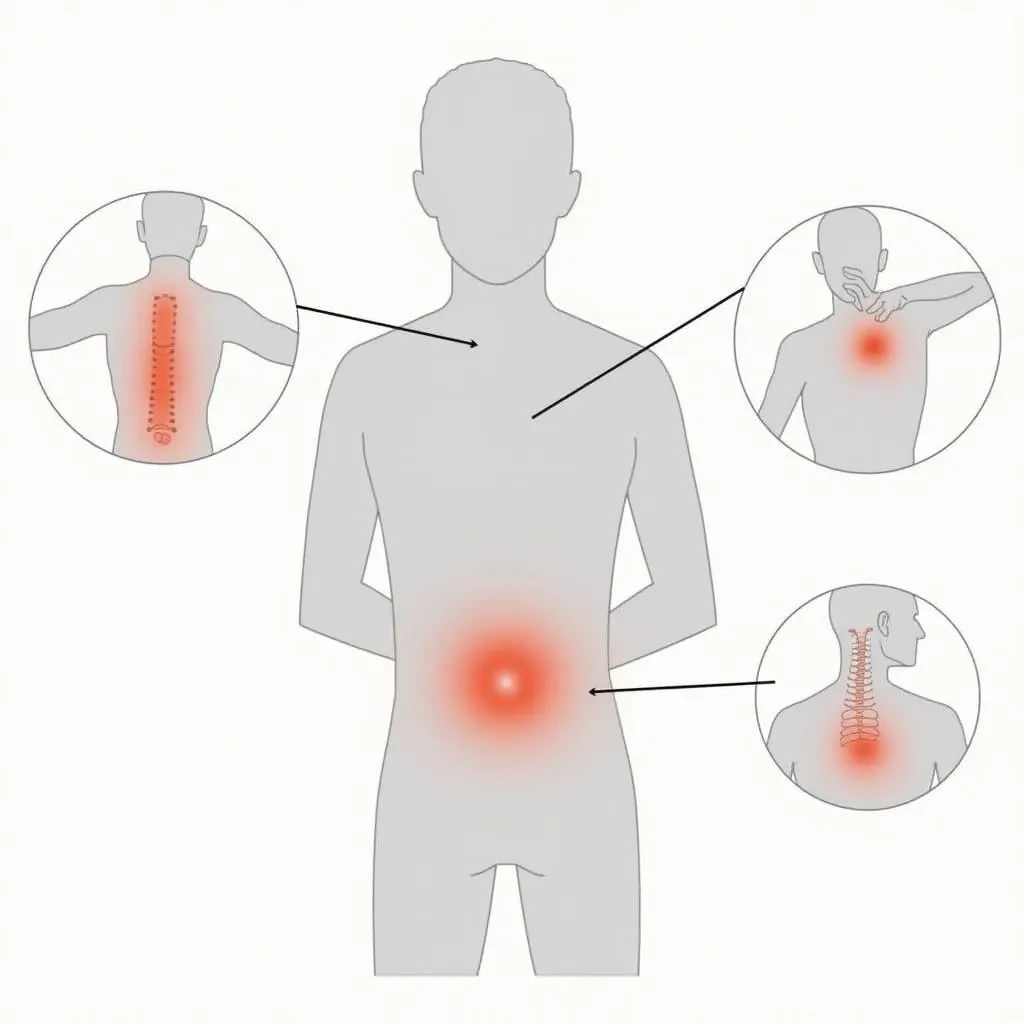Axial spondyloarthritis (axSpA) is an inflammatory disease that primarily affects the spine, causing pain, stiffness, and, in some cases, joint damage. It encompasses conditions like ankylosing spondylitis and non-radiographic axial spondyloarthritis. Many individuals experiencing axSpA symptoms wonder, “When will this pain go away?” Let’s delve into the Mayo Clinic’s insights on axSpA symptom duration and management.
While there’s no one-size-fits-all answer to when axSpA symptoms disappear, early diagnosis and treatment are crucial for managing symptoms and potentially slowing disease progression. The Mayo Clinic emphasizes that individual experiences vary greatly.
Understanding Axial Spondyloarthritis Symptoms
AxSpA often presents with lower back pain and stiffness, especially in the morning or after periods of inactivity. Other common symptoms can include:
- Pain and stiffness in the buttocks and hips
- Neck pain and stiffness
- Fatigue
- Loss of flexibility in the spine
- Eye inflammation (uveitis)
 Illustration of Common Axial Spondyloarthritis Symptoms
Illustration of Common Axial Spondyloarthritis Symptoms
Factors Affecting Symptom Duration
The duration of axSpA symptoms can be influenced by several factors, including:
- Disease severity: Individuals with more severe inflammation may experience longer-lasting symptoms.
- Treatment response: Effective treatment with medications, physical therapy, and lifestyle modifications can help manage symptoms and potentially shorten their duration.
- Individual factors: Factors like genetics, lifestyle, and overall health can play a role in how long symptoms persist.
- Disease activity: AxSpA can fluctuate between periods of flares (increased symptoms) and remissions (reduced or no symptoms).
Mayo Clinic Treatment Approaches for AxSpA
The Mayo Clinic adopts a comprehensive approach to managing axSpA, aiming to alleviate symptoms and improve quality of life. Treatment options may include:
- Medications:
- Nonsteroidal anti-inflammatory drugs (NSAIDs): To reduce pain and inflammation.
- Disease-modifying antirheumatic drugs (DMARDs): To slow disease progression and reduce joint damage.
- Biologic therapies: Targeted medications that block specific proteins involved in inflammation.
- Physical Therapy: A cornerstone of axSpA management, physical therapy focuses on:
- Maintaining flexibility and range of motion
- Strengthening muscles
- Improving posture
- Pain management techniques
- Lifestyle Modifications:
- Regular exercise: Low-impact activities like swimming, walking, and yoga can be beneficial.
- Quitting smoking: Smoking has been linked to worsened axSpA symptoms and disease progression.
- Healthy diet: A balanced diet can support overall health and potentially reduce inflammation.
 Physical Therapy Exercises for Axial Spondyloarthritis
Physical Therapy Exercises for Axial Spondyloarthritis
When to Seek Medical Advice
It’s essential to consult a healthcare professional if you experience persistent or worsening back pain, especially if it’s accompanied by other axSpA symptoms. Early diagnosis and treatment are vital for effective management.
Conclusion
While the duration of axSpA symptoms can vary, proactive management through medical care, physical therapy, and lifestyle changes can significantly impact symptom control and long-term outcomes. If you’re concerned about axSpA, don’t hesitate to reach out to a healthcare provider for personalized guidance and treatment options.
FAQ About Axial Spa Symptoms
Q1: Can axial spa be cured?
A1: While there’s no cure for axSpA, early and effective treatment can manage symptoms, slow disease progression, and improve quality of life.
Q2: How long do axial spa flares last?
A2: The duration of flares is unpredictable and can vary from person to person. Factors like disease severity, triggers, and individual response to treatment play a role.
Q3: Is axial spa a serious condition?
A3: AxSpA is a chronic inflammatory disease that can lead to significant pain, stiffness, and disability if left untreated. Early diagnosis and management are essential.
We’re Here to Help
For personalized guidance on axial spondyloarthritis and other health concerns, contact our dedicated team at SPA KOREAN.
Phone: 0373298888
Email: [email protected]
Address: 86 Cầu Giấy, Hà Nội
Our team is available 24/7 to answer your questions and provide support.